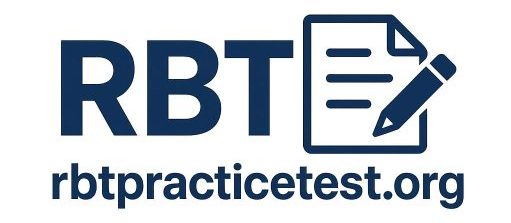Before you can begin working as a Registered Behavior Technician (RBT), earning your RBT certification is a non-negotiable first step. This certification is required to begin working and ensures you’re prepared to deliver behavior-analytic services under supervision. But if the process seems confusing or overwhelming, you’re in the right place.
This guide will walk you through each stage in a clear and supportive way, from eligibility and training to the exam and ongoing requirements. Whether you’re new to the field or looking for clarification, you’ll find everything you need right here. Ready to discover?
What is RBT certification?
The RBT Certification is a paraprofessional certification in behavior analysis by the Behavior Analyst Certification Board (BACB®). This certification is intended for individuals who deliver behavior-analytic services under the close supervision of a certified behavior analyst.
Earning the RBT certification verifies that the technician has met all training, assessment, and examination requirements to competently support behavior change programs based on ABA principles.
Who should pursue RBT certification?
You should consider pursuing RBT certification if you:
- Are a student, teacher aide, caregiver, or psychology major looking to apply ABA in real-life contexts
- Plan to take the RBT exam and start a career in behavior analysis
- Are seeking an entry-level credential or license to work in education, special needs, or mental health
- Want practical experience working under supervision before becoming a BCBA
- Need a nationally recognized, structured credential to qualify for ABA technician jobs
Becoming an RBT is ideal for individuals who want to make a direct, measurable difference in the lives of others while learning applied behavioral strategies from experienced professionals.
What can you do with the RBT certification?
Earning your RBT certification opens the door to entry-level positions in the field of Applied Behavior Analysis (ABA). As a certified RBT, you can work directly with children and individuals with autism or other developmental disabilities in a variety of settings, including:
- ABA therapy clinics
- Public and private schools
- In-home therapy programs
- Hospitals and community centers
With the rising national demand for ABA services, RBTs enjoy strong job stability, flexible work environments, and competitive pay. On average, RBTs in the U.S. earn around $56,000 annually, varying from location, experience, and employer. So, RBT is a promising and rewarding career choice for those passionate about helping others through behavioral therapy.
How to get an RBT certification
To become a Registered Behavior Technician (RBT), you must complete four key steps: meet the eligibility criteria, finish a 40-hour training course, pass a competency assessment, and submit your certification application. Register for the RBT exam and pass – you’ll earn the RBT certification and be ready to start your career in ABA therapy. The sections below walk you through each step of this process.
Step-by-step requirements for RBT certification
To become a Registered Behavior Technician, you must meet all eligibility and training requirements set by the Behavior Analyst Certification Board (BACB®). These requirements are designed to ensure that RBTs enter the field with the essential knowledge, practical skills, and ethical foundation for behavior-analytic services.
Step 1: Meet the eligibility requirements
Before applying for certification, you must:
- Be at least 18 years old
- Have a high school diploma or equivalent
- Pass a criminal background check and abuse registry screening
The background and abuse checks must be completed within 180 days prior to paying your certification application fee. A qualified supervisor (either a BCBA or BCaBA), referred to as the Attesting Certificant, is responsible for verifying that you meet these requirements.
Supervisors confirm your eligibility by signing the official RBT Certification Application Attestation form. This form must be uploaded with your application and signed no more than 90 days before submission.
In case your application is selected for audit, your supervisor may be required to provide documentation supporting the attestation. While fingerprinting is not required by the BACB, some states or employers may impose their own additional requirements.
Step 2: Complete a 40-hour RBT training program
You must complete a 40-hour training course that aligns with the BACB’s RBT Task List (2nd edition). This training provides foundational instruction in:
- Applied Behavior Analysis (ABA) principles
- Behavior reduction techniques and intervention strategies
Data collection and reporting - Ethical guidelines and professional conduct for RBTs
This training program is essential for anyone pursuing this job, defining what is an RBT and what task an RBT will actually do. The training equips you with the fundamental knowledge required to deliver behavior-analytic services effectively under supervision.
The course must be:
- Completed in no fewer than 5 days and no more than 180 days
- Delivered by a provider who meets BACB training requirements
Once completed, you will receive a training certificate, which must be submitted as part of your certification application.
Many employers, such as Surpass Behavioral Health, offer this training as part of their onboarding process for new Behavior Technicians, allowing trainees to meet certification requirements while gaining job experience.
Step 3: Pass the RBT initial competency assessment
After completing the training, you must demonstrate that you can competently perform tasks outlined in the RBT Task List. This is done by completing the Initial Competency Assessment with a qualified assessor (BCBA or BCaBA). The assessment must:
- Be completed within 90 days before you submit your certification application
- Include direct observation of your ability to apply ABA strategies in practice
- Be conducted either in person or via secure video conferencing
Once the assessment is complete and approved, your supervisor will sign the official assessment form, which must be uploaded with your application.
How to register for the RBT exam
After your RBT certification application is approved by the Behavior Analyst Certification Board (BACB®), you’ll receive an authorization email with instructions to schedule your exam through Pearson VUE, the official testing provider.
To complete registration, you must:
- Log in or create your Pearson VUE account
- Schedule your exam appointment at an authorized test center
- Pay the $45 exam fee at the time of scheduling
All exams are scheduled and paid for directly through the Pearson VUE system after receiving BACB approval.
As the applicant, make sure that your BACB application is accurate and complete, carefully following the instructions in your authorization email. Then you must schedule your exam as soon as possible to secure your preferred date.
Testing locations
RBT exams are delivered in person at secure Pearson VUE test centers. These centers are available in multiple countries to support global accessibility, including:
- The United States
- Canada
- The United Kingdom
- Australia
- Select U.S. military bases (if they meet security protocols)
Testing sites are routinely evaluated and expanded based on regional demand and candidate requests.
Required fees and additional costs
The total cost of becoming an RBT typically ranges from $100 to $400, depending on your training provider and location. Below is a summary of common expenses:
| Fee Type | Cost (USD) | Notes |
| BACB Application Fee | $50 | Paid when submitting your application |
| Exam Fee (Pearson VUE) | $45 | Paid when scheduling the test |
| Background Check | Approximately $50 | Varies by provider or state |
| Training (40-Hour) | $50–$200+ | Some employers offer this for free |
All fees are the responsibility of the applicant unless covered by an employer or training sponsor.
Exam format and passing requirements
The Registered Behavior Technician (RBT®) exam is designed to assess your knowledge and application of the skills outlined in the RBT Task List (2nd edition).
The exam consists of 85 multiple-choice questions, each with four answer options, and must be completed within 90 minutes. Only 75 of these questions are scored and count toward your final result; the remaining 10 are unscored pilot questions used to evaluate future test items. You won’t be able to distinguish between scored and unscored questions during the exam.
To pass the exam and qualify for certification, you must score at least 80% on the 75 scored questions (equivalent to 60 correct answers), with results available immediately upon completion.
After passing: Earning the RBT credential
Once you pass the RBT exam, you will officially receive your RBT certification from the Behavior Analyst Certification Board (BACB®). At this point, your name will appear in the BACB’s public registry, confirming your status as a certified RBT.
With this credential, you are eligible to begin working as a behavior technician or RBT therapist, delivering behavior-analytic services under the ongoing supervision of a qualified BCBA or BCaBA. However, certification is not a one-time event—it comes with responsibilities you must maintain throughout your career.
To keep your RBT certification active annually, you must:
- Maintain supervision by a certified behavior analyst (BCBA or BCaBA)
- Complete an annual RBT certification renewal application
- Submit a background check (if required)
- Complete a renewal competency assessment each year
Failure to meet these ongoing requirements may result in certification expiration, requiring additional steps to become reinstated. Meeting all requirements will assure your position consistently for years.
If too much time passes after expiration, you may be required to retake the RBT exam. Use a detailed RBT study guide to update the exam structure and key content areas. You also have to practice more RBT mock test to prepare well and boost confidence on the official exam day.
Conclusion
RBT certification is not only a formal requirement but also a valuable starting point for anyone pursuing a career in ABA. The certification process may seem challenging at first, but it’s entirely manageable with the clear and thorough guide. With proper preparation and your effort, you’ll pass the exam and soon be working in the field, helping children with autism develop daily living skills and reduce challenging behaviors through ABA strategies.

